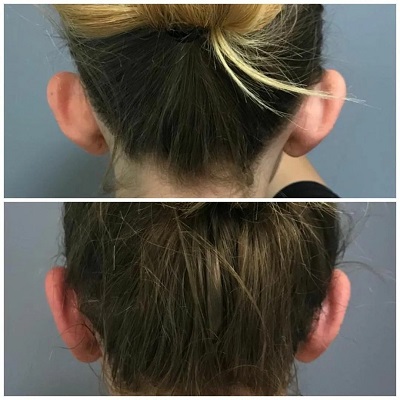Managing Pain and Swelling After Ear Surgery
Otoplasty, also known as ear reshaping surgery, is a cosmetic procedure designed to correct the shape, size, or position of the ears. Whether done for aesthetic reasons or to fix congenital deformities, this procedure can significantly enhance facial balance and boost self-confidence. However, like any surgical process, pain and swelling are natural parts of the recovery journey. Managing these symptoms effectively is crucial for a smooth and comfortable healing experience.
Patients undergoing Ear Reshaping in Islamabad often wonder what to expect during the initial days after surgery and how to handle discomfort. This comprehensive guide explains the causes of post-operative pain and swelling and provides practical tips for easing them.
Why Do Pain and Swelling Occur After Otoplasty?
Pain and swelling are the body’s natural responses to trauma, even in a controlled surgical environment. During ear reshaping, incisions are made behind the ear or in the ear cartilage, depending on the technique used. This triggers inflammation, which causes localized swelling and discomfort.
Swelling helps transport white blood cells and nutrients to the area to support healing, while pain acts as a protective mechanism to encourage rest.
Timeline of Pain and Swelling
Understanding what is normal—and when—can help you stay calm and monitor your recovery appropriately:
Day 1–3 Post-Surgery:
Swelling and discomfort peak during the first 48–72 hours.
The ears may appear red, puffy, or larger than expected.
Mild to moderate pain is common and typically managed with prescribed medication.
Day 4–7:
Pain begins to subside.
Swelling gradually decreases, but some puffiness remains.
Stitches and bandages may still be in place.
Week 2–4:
Pain is usually minimal.
Residual swelling may be visible but should continue to fade.
Final results start becoming noticeable.
If swelling worsens instead of improving after the first week or is accompanied by fever or discharge, consult your surgeon immediately.
Tips to Manage Pain After Ear Surgery
1. Use Prescribed Medications
Your surgeon will prescribe pain relievers, often non-opioid medications like paracetamol or ibuprofen. Take them on time, even if the pain seems mild initially. Avoid self-medicating without your doctor’s approval.
2. Keep Your Head Elevated
Sleeping with your head elevated reduces blood flow to the ears and minimizes pressure, which helps reduce pain. Use 2–3 pillows or a wedge pillow when resting.
3. Wear the Headband as Directed
Most patients are instructed to wear a protective headband, especially while sleeping. It keeps the ears in their new shape and protects against accidental bumps or folds, which can trigger pain.
4. Apply Cold Compresses
Applying a cold pack (wrapped in a cloth) around the ears during the first 48 hours can:
Numb the area and ease pain
Constrict blood vessels and reduce swelling
Avoid placing ice directly on the skin, and do not use compresses if your surgeon advises against it due to surgical dressings.
Tips to Reduce Swelling After Otoplasty
1. Stay Hydrated
Drinking plenty of water flushes out toxins and supports tissue healing. Avoid caffeinated and sugary drinks in the early days post-surgery.
2. Limit Salt Intake
Sodium causes the body to retain water, which can worsen swelling. Stick to a low-sodium diet rich in fruits, vegetables, and lean proteins.
3. Avoid Physical Strain
Refrain from bending over, lifting heavy objects, or participating in strenuous activities for at least 2 weeks. Physical exertion raises blood pressure and can intensify swelling and discomfort.
4. Avoid Smoking and Alcohol
Both substances impair circulation and slow healing. They can worsen swelling and increase the risk of infection. Stop smoking and drinking at least two weeks before and after the surgery.
What Not to Do During Recovery
Don’t remove bandages early. Let your surgeon do it during your follow-up visit.
Avoid scratching or touching the ears. It may increase irritation or lead to infection.
Don’t sleep on your side. This puts pressure on the ears and may cause pain or asymmetry.
When to Call the Surgeon
While some pain and swelling are expected, you should contact your doctor if you notice any of the following:
Severe or worsening pain that doesn’t improve with medication
Swelling that intensifies after 3 days
Yellow or green fluid from the incision site
Fever above 100.4°F (38°C)
Unusual redness, hardness, or warmth around the ears
Prompt medical attention ensures that complications like infections or hematomas are managed early.
Natural Remedies That May Help
While prescribed medication should be your main pain-relief strategy, you can complement it with these gentle remedies:
Arnica Gel or Tablets: May reduce bruising and swelling (ask your surgeon first).
Chamomile Tea: Acts as an anti-inflammatory and can be soothing when consumed.
Lavender Oil Aromatherapy: May help reduce stress and ease mild pain perception.
Always consult your doctor before trying herbal or natural remedies post-surgery.
Psychological Comfort During Healing
Pain and swelling can be emotionally taxing, especially if you’re anxious about your appearance or results. To stay mentally and emotionally positive during recovery:
Keep realistic expectations.
Avoid checking the mirror frequently during early recovery.
Stay in touch with your surgeon’s office for reassurance.
Take time off from work or school to reduce stress.
How Long Until I Feel Normal Again?
While many patients resume their daily activities within 1–2 weeks, full healing and the final appearance of the ears can take 6–8 weeks. Be patient—temporary discomfort is part of the process, and each day brings noticeable improvement.
Final Thoughts
Pain and swelling after ear reshaping are not only expected—they’re necessary signs that your body is healing. The key is to manage these symptoms with care and consistency. By following post-operative guidelines, using prescribed medications, and avoiding high-risk activities, you can minimize discomfort and maximize results.
If you’re considering Ear Reshaping in Islamabad or are in recovery from the procedure, partnering with an experienced clinic is essential for a safe and comfortable journey. The SKN Cosmetics clinic offers top-tier expertise, personalized aftercare, and state-of-the-art facilities to ensure your healing experience is as smooth as your new look.
